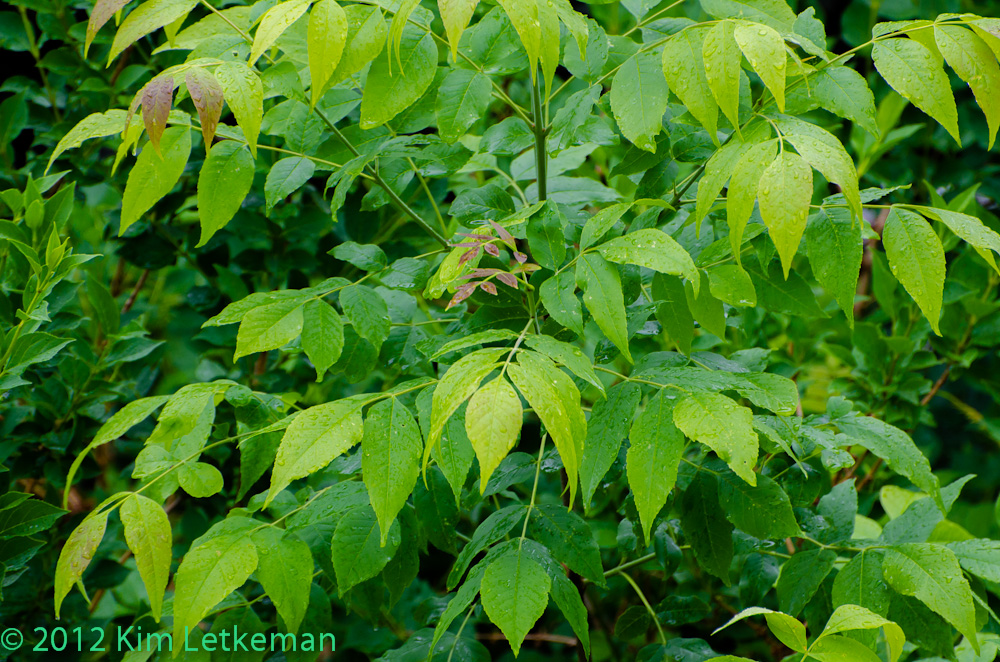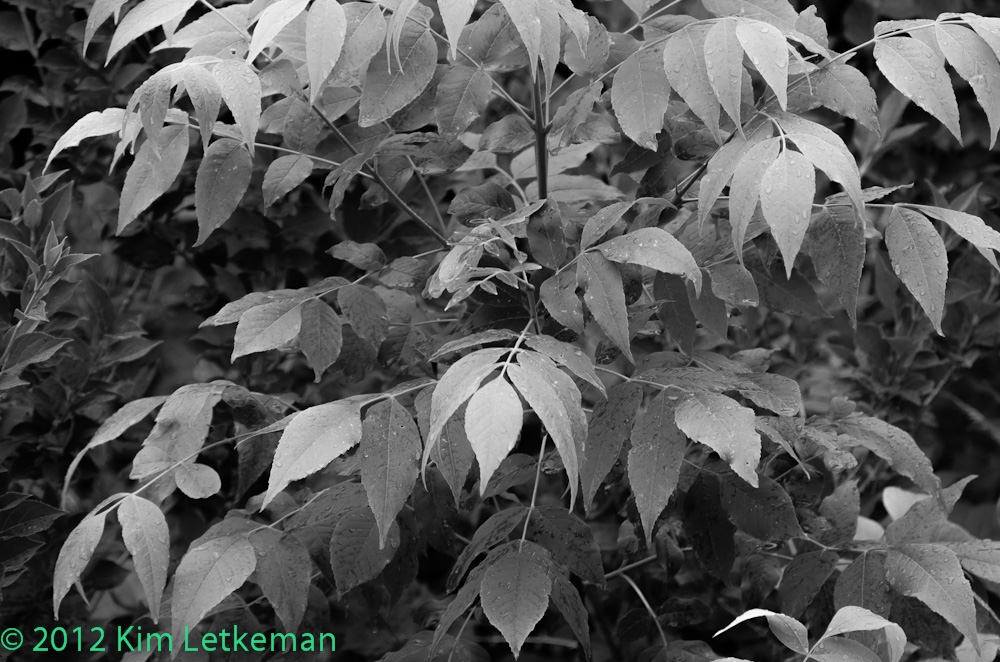Two days of rain. Boring. Not that big a deal though, since I must spend this weekend preparing the furnace room for a full replacement. Should be interesting I would say.
Anyway, I had the D7000 downstairs to document some cheques that I was writing (I keep photographic evidence of certain documents in lieu of scanning them … not really much difference in quality and scanning is more of a hassle to me.) I brought a couple of lenses and shot the garden from the comfort of my dining room, just poking the lenses out to the back yard.
I first shot the Tamron 19-35 3.5-4.5 lens, a very inexpensive used lens I once bought for the D700. It’s surprisingly sharp and the range is just right for full frame, being rather wide. For APS-C on the D7000, the range is acceptable at 28.5-52.5 … more or less equivalent to a standard walk about zoom. And for about 100 bucks, who is to complain?
Note: I’m keeping my FF lenses – this Tamron and the Tamron 28-75 2.8 – for the day when I am done with putting kids through university etc … and the day when hopefully Nikon will see fit to drop a FF sensor into a body the size of the D7000. Or maybe I will grab a D800 :-)
Anyway … sliding off topic. I have always liked this little Tammy, although it did perform better with the larger and less dense pixels on the D700. That thing was absolutely magnificent. But on the D7000 it just requires a bit of a deft touch on the sharpening controls to get very nice results.
For example … the western end of the pool has a number of nice bushes, and they all show up with perfect clarity here.

Nikon D7000, Tamron 19-35 100iso f/4.5 1/80 35mm (52mm EFL)
Of course, I do recommend that you click through the images in this article to see them at 1000px. Much better detail available there.
Looking to the east end of the pool, the detail is again very high. I find the lens sharper at 19mm, which is very welcome. Mega zooms tend to have problems at full wide, while smaller range zooms can balance things a bit better. Of course, I also stopped down this time to f/5.6, which always makes a big difference. Even professional grade lenses benefit.

Nikon d7000, tamron 19-35 100iso f/5.6 1/80 19mm (28mm EFL)
I also lost a touch of the wide FOV because I straightened the lines on the house in the background. Pointing the lens downward slightly caused the house to lean, so a quick tweak of the manual lens correction profile fixed that right up.
Next, I snapped on the 70-300mm 4.5-5.6 VR. This is a great lens for a low price. I paid 400 bucks used from a fellow in Calgary, AB. He shipped it to me in 4 days just in time to go to Florida back in 2008 I believe. The lens has been excellent on every body I have owned since.
Here, at 300mm, the clarity is remarkable from 40 feet away. I have stopped down slightly (2/3 stops) to sharpen the corners a touch. The subject is, of course, my Hansa rose bush.

Nikon d7000 + 70-300VR 400iso f/7.1 1/125 300mm (450mm EFL)
Here is my Forsythia bush, backed by my neighbour’s Black Maple tree.

nikon d7000 + 70-300VR 400iso f/7.1 1/80 300mm
My Yellow-Twigged Dogwood bush has finished flowering and can now embark on this year’s acquisition of more territory. Aggressive does not begin to capture its growing habits …

nikon d7000 + 70-300VR 400iso f/7.1 1/125 300mm
The False Spirea is a lovely bush that looks scraggly for the few few weeks of its leafing out. But then all the leaves appear and it looks terrific. Here, it competes for space with the tiny remnants of my Sand Cherry bush and the Yellow-Twigged Dogwood. This promises to be a real battle royal between these two. The two Peony bushed have already succumbed to the Dogwood, and the Sand Cherry appears to be next. I think I should move it across the yard to an open space. Fair is fair …

nikon d7000 + 70-300VR 400iso f/7.1 1/100 300mm
I have again fallen prey to guest trees this year. There are now five growing on the yard, and I must deal with them as they never seed in a good location. I think of these as “bird shit trees” as I suspect that they often arrive by excretion-mail … anyway, the best identification I can come up with is that this is a Green Ash tree. In fact, that’s what I had in my front yard, which thus I think this one must go. The beetles that are killing Ash trees around these parts are probably not going to stop … and this tree is far too large to grow next to my pool.

nikon d7000 + 70-300VR 400iso f/7.1 1/160 300mm
Two alternate renderings as I was playing with Lightroom 4. The presets can be useful, but ultimately you will want to learn the dials anyway.
Here, I was playing with the medium contrast preset and ended up tweaking that a bit to my liking. But this is actually a nicer rendering than my lower contrast one above. I will have to train myself away from the “peering into shadows” look, as it is not always the right look.
And the orange filter preset in the black and white area creates a nice starting point. I further enhanced the contrast, but this started out much better than the red filter preset, which had too much whites to work well. Backing the white point off would have tamed that, but I prefer to start with nice balanced tones as I add contrast.
And finally, another bird-shit guest growing at the west end of the pool. Also a place where I cannot have tree roots. So it must go. But this one I think I might save, as I have identified it tentatively as a Norway Maple, a rather nice species for a yard. And a European import.

nikon d7000 + 70-300VR 400iso f/7.1 1/125 300mm
The one upside to rainy days is that the garden looks very lush. I do like that …

